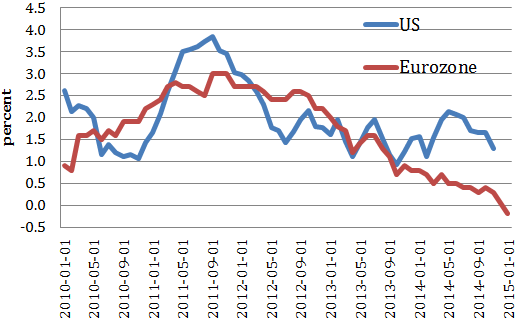Contents:


When a company generates profits, equity shareholders are the last to get paid. The first preference is given to creditors, then preference shareholders, and so on. Hence, investors need to understand how much value the company creates.
Is Israel failing to protect its most vulnerable citizens? – The Jerusalem Post
Is Israel failing to protect its most vulnerable citizens?.
Posted: Fri, 05 May 2023 15:53:00 GMT [source]
Below accounts are used for other internal purposes and should not be used to transfer money to Upstox. A ROA of 5% or more is decent enough to judge the efficiency of a company. If the percentage is 20% or more, it is considered excellent. Our counsellors will get in touch with you with more information about this topic. Debt is one of the major factors that separates ROA and ROE. You can get the value of net income from the income statement.
Mutual fund Investments
Return on Assets measures a company’s profitability against its assets and resources. However, a company’s ROA should only be compared to its competition within the same sector for better and more accurate results. The ROA shows how effectively a business uses its assets to generate profits. Investors can use it to identify potential investment opportunities. An increasing ROA shows that the company profits from each rupee invested in its assets. On the other hand, a declining ROA means that the corporation has invested in assets that aren’t yielding enough revenue.
When calculating a company’s profit margin, the return on assets or return on total assets is used. This profitability ratio shows how much profit a company’s assets are bringing in on a year-over-year basis. Return on assets indicates to investors how well a company creates profit growth from capital supplied to it, both debt and stock.
ROA and DEEP’s eco-engineering – Collater.al Magazine ENG
ROA and DEEP’s eco-engineering.
Posted: Wed, 19 Apr 2023 07:00:00 GMT [source]
The PCA helps alert the regulator as well as the investors and depositors when it identifies that the bank is increasing its NPAs. It also encourages the banks to conserve capital for a much stronger balance sheet and avoid riskier transactions which may result in bad loans and negative ROA. Update your mobile numbers/email IDs with your stock brokers. Receive information of your transactions directly from Exchange on your mobile/email at the end of the day. A company’s balance sheet is a summary of its business assets (i.e., what the business owns) and liabilities .
What is the formula used to calculate return on assets (ROA)?
In this case, the company invests money into capital assets and the return is measured in profits. ROE combines the income statement and the steadiness sheet as the web revenue or revenue is compared to the shareholders’ fairness. The return on fairness is a measure of the profitability of a business in relation to the equity. Because shareholder’s equity may be calculated by taking all assets and subtracting all liabilities, ROE may also be thought of as a return on assets minus liabilities. ROE measures how many dollars of revenue are generated for every dollar of shareholder’s equity.
Let’s say you wish to start a salon which will need a capital of Rs 10 lakh. Currently, you have Rs 7 lakh in hand, and you borrow Rs 3 lakh. So, let’s dive deep into understanding these financial ratios. The DuPont analysis helps make this comparison more detailed and accurate.
- On the other hand, a declining ROA means that the corporation has invested in assets that aren’t yielding enough revenue.
- He’s been creating Content for a long time, but it was his fascination and zeal for the stock market that steered him in the right direction.
- Companies in Oil and Gas, chemicals etc., are typically asset-intensive and have low ROA.
- By distinction, an ROA that’s higher than the price of debt implies that the company is pocketing the difference.
- A good thumb rule for investments is to aim for companies with ROE equal to or just above the average ROE of competitors.
A optimistic ROA ratio often signifies an upward profit trend as nicely. ROA is most useful for comparing corporations in the same business as totally different industries use property in a different way. This can be done by measuring the Return on Equity ratio of the company, which will be discussed in the next blog of the series. For non-financial companies, debt and equity capital are strictly separated. For debt providers, the return is interest expense, and Net Income is the return for equity investors.
What is a good return on assets ratio?
ROE compares net income to the net assets of the company, whereas ROA compares net income to the company’s assets alone, without making any deductions of its liabilities. Splitting return on equity into three elements makes it easier to understand changes in ROE over time. For example, if the net margin increases, each sale brings in more money, resulting in the next general ROE.
The companies in manufacturing, construction, mining, etc sectors are usually asset intensive. A business with a return on assets of less than 5% is termed asset-intensive. A company with a return on assets of more than 20% is not asset concentrated. It measures the quantity of a company’s income that’s returned as shareholder fairness. Some corporations are “lighter,” with their value based mostly on issues such as emblems, model names, and patents, which accounting guidelines don’t acknowledge as property. ROA also resolves a major shortcoming of return on fairness .
Hence, a DuPont Analysis is performed to break down the ROE components and understand each of their roles and effect on the ROE ratio. However, these ratios still do not provide the whole picture. It is important to break down the components of ROA and ROE and understand each of their current positions so that an investor can make a more informed decision.
ROE is the ratio of Annual net income and average shareholders equity. The fundamental distinction between ROE and ROA is how a company’s debt is calculated. In the absence of debt, shareholders’ equity and the total assets of the company will be equal. Debt and equity capital are strictly divided into non-financial organizations. Interest expense is the return for debt suppliers, while Net Income is the return for equity investors.
ROA helps you understand how well the company uses both forms of finances that is debt and equity. So if you want to get a correct idea about how the company is performing then you have to consider both ROA and ROE. ROA shows how effectively the company can make use of its assets to get maximum profit. A high ROA shows that the company has a solid performance as far as finance and operation of the company is concerned.
DuPont analysis helps investors identify the source of increased or decreased equity returns. The DuPont system is important because it provides a complete, overall picture of any company’s financial health and performance compared to the common and limited equity valuation tools. In DuPont analysis, these two performance metrics – Net profit and Asset turnover ratios are combined to figure out the Return on Asset Ratio of the company. Net Income, also known as ‘net profit,’ can be found in a company’s Income or profit/loss statement. The Net Income calculation considers all the money that comes in and goes out of the company. It is the amount realized after deducting all the costs of business operation in a given period.
As we have already seen that ROA is the ratio of annual internet income and total assets. The company generates $12 in net income for every $100 invested in assets. The quick ratio provides a more reliable measure of liquidity that the current ratio especially when the company’s inventory takes a _ time to sell. Average complete property is outlined as the average amount of belongings recorded on a company’s stability sheet at the end of the current 12 months and previous 12 months. This figure is most commonly used in comparison to the total sales figure for the current year, to find out the quantity of belongings required to support a specific amount of sales.
Buffet indicator – What is it, Formula, interpretation
roa meaning and return on equity are examples of determining the company’s capacity to get more profits and get more earnings from their investments. Both these entities give an idea about the corporate health. Together they give an idea of the performance of the company.
ROA demonstrates how worthwhile an organization is relative to its complete belongings with the intention of creating a profit. The greater the return, the more efficient the management is in using its asset base. Company ABC Ltd has posted a net operating income of Rs 86 in current operations in its Profit & Loss Statement and owns total assets worth Rs 500 as per its balance sheet. The debt in the total assets is worth Rs 200, with an interest rate of 6%. Therefore, it is always better to consider the average total assets for the time period rather than calculate the total assets for one period.
This can be in the form of both capital appreciation and dividends. If you want to increase the ROA then you must try to increase the profit margin or you must try to make maximum use of the company assets to increase sales. This is because it indicates that the company is using its assets effectively in order to get more net income.

ROA should always be used in comparing companies in the same industry. Total assets are available in a company’s balance sheet and include tangible assets only. Hence, return on assets is a crucial indicator of how a company is performing that further helps in achieving success by taking corrective actions on time.
MIND CURE AND LNG ENERGY GROUP ENTER INTO … – Canada NewsWire
MIND CURE AND LNG ENERGY GROUP ENTER INTO ….
Posted: Sat, 06 May 2023 02:09:00 GMT [source]
The main difference between ROE and ROA is how the company’s debt is taken into account. Shareholder equity and the total assets of the business will be equal in the absence of debt. However, return on assets signifies how well a company is able to increase revenue using its total assets. Let’s say the returns on asset ratio of a company in the manufacturing industry is 6%. And the ROA of a company in the tech industry comes out to be 15%. If you compare both of them, you may think investing in the tech industry is better.
Lascia un commento